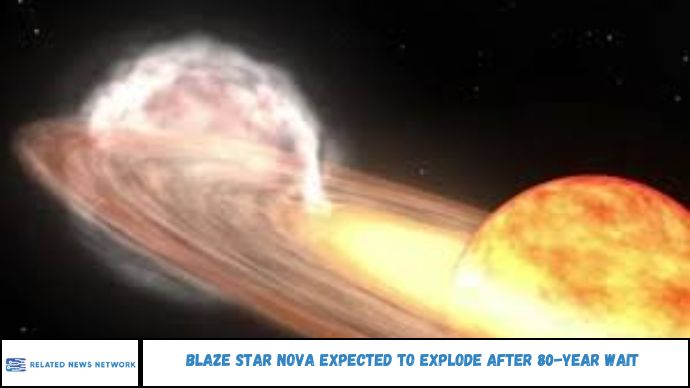Blaze Star Will Explode Soon After 80 Years of Silence
Blaze Star Nova Expected to Explode After 80-Year Wait Imagine looking up at the night sky and seeing a brand-new star flare into view—so bright, it’s visible with the naked eye. That’s exactly what astronomers expect to happen very soon, as T Coronae Borealis, known as the Blaze Star, prepares to erupt in a dazzling nova explosion for the first time since 1946.
The countdown has begun for T Coronae Borealis, a binary star system hurtling toward a powerful nova explosion that will be visible to the naked eye from Earth. Nicknamed the “Blaze Star”, this rare stellar event hasn’t happened since 1946—and astronomers now believe the next eruption will likely occur in late 2025.
Abstract
The Blaze Star, a recurring nova located in the T Coronae Borealis system, is on the brink of a powerful thermonuclear explosion—its first in over 80 years. This rare event will make the star visible to the naked eye, offering a once-in-a-lifetime view of a nova eruption from Earth. Learn how, when, and where to witness this celestial light show and why it matters for modern astronomy.
What Is the Blaze Star?
The Blaze Star, or T Coronae Borealis (T CrB), is a binary star system located about 3,000 light-years away in the constellation Corona Borealis. It consists of:
- A white dwarf (an old, dense star)
- A red giant (a swollen, aging star)
These two stars orbit each other and interact in a dramatic way, with the white dwarf stealing gas from the red giant. This process eventually leads to a thermonuclear explosion, or nova, on the white dwarf’s surface.
Why Is It About to Explode?
The Blaze Star has a history of eruptions:
- First recorded in 1866
- Then again in 1946
- Now, after roughly 80 years, it’s showing the same pre-eruption signs
Astronomers have noted a steady increase in brightness and changes in temperature—both strong indicators that the nova is imminent. Based on current data, the explosion could occur as early as mid-2025.
How and When to See the Blaze Star Nova
Visibility:
- The nova will be bright enough to see with the naked eye, similar to the North Star
- Best viewed in areas with minimal light pollution
- It will appear in the constellation Corona Borealis in the northern hemisphere
Estimated Date:
- Astronomers suggest sometime between March and November 2025
- The exact date is uncertain, but pre-nova behavior is already happening
Keep your eyes on the sky—and your local astronomy alerts.
What Makes This Nova Event So Rare?
Unlike supernovae, which destroy stars, novae do not. This makes them repeatable and scientifically valuable.
Key Points:
- Recurrent novae like Blaze Star are rare; only 10 known systems exist in our galaxy
- This will be the first nova of its kind observed with modern telescopes like the James Webb Space Telescope
- Scientists can study how binary star systems evolve, and how white dwarfs accumulate mass
This event could offer new clues about how stars live and die.
Quick Facts About Blaze Star Nova
- Type: Recurrent nova in a binary star system
- Distance: ~3,000 light-years from Earth
- Last Eruption: 1946
- Next Predicted Eruption: 2025
- Visibility: Naked-eye visible for up to a week
- Location in Sky: Constellation Corona Borealis
Frequently Asked Questions (FAQs)
1. What is a nova?
A nova is a sudden, bright explosion on a white dwarf star caused by accumulated gas from a companion star. It does not destroy the star.
2. Is Blaze Star a supernova?
No. It’s a recurrent nova, which means it erupts multiple times without destroying the star.
3. Can I see the Blaze Star without a telescope?
Yes! It will be as bright as the North Star, visible to the naked eye in dark-sky areas.
4. When will the Blaze Star nova happen?
Astronomers expect the explosion to occur between March and November 2025.
5. Where should I look in the sky?
Look for the constellation Corona Borealis, best viewed in the northern hemisphere.
6. Why is this event important?
This nova is a rare opportunity to study binary star systems, stellar evolution, and even the precursors to Type Ia supernovae.
Conclusion
The universe doesn’t send out invitations—but when something like the Blaze Star nova is on the horizon, you’ll want front-row seats. Whether you’re a seasoned astronomer or a casual skywatcher, this event is one of the most anticipated celestial shows of the decade.







